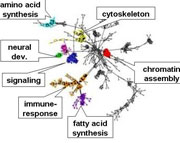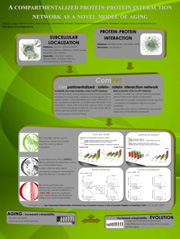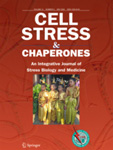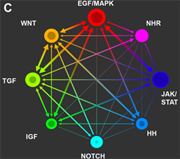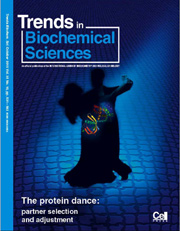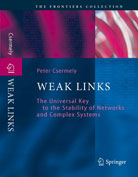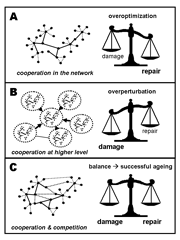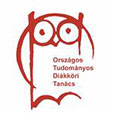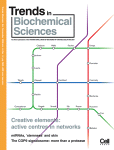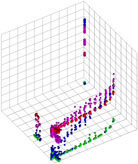News archive
A network analysis of chromatin networks was published in Cell Reports
November 2012
As a joint work with Singaporean colleagues a detailed analysis of the interaction network of trancriptionally active, RNA-polymerase II-related DNA segments was published in Cell Reports. The paper successfully applied the ModuLand method of the LINK-Group and showed the existence of functional modules of the transcriptionally active chromatin.
The LINK-Group member Tamás Korcsmáros received the Prima Junior Award
October 2012
Tamás Korcsmáros has received the prestigeous Prima Junior Award recognizing excellent Hungarian young scientists.
A significantly updated version of our signaling database, SignaLink 2.0 has been published
September 2012
In cooperation with the Cellular Network Biology Group in the Eötvös University an update of our signaling database Signalink 2.0 was published.
The updated version contains pathway regulators (e.g., scaffold and endocytotic proteins) and modifier enzymes (e.g., phosphatases, ubiquitin ligases) as well as the transcriptional and post-transcriptional regulators (transcription factors and micro-RNAs) besides signaling pathway components.
Peter Csermely became a network and systems biology editor of (Nature) Scientific Reports
July 2011
Peter Csermely became an editor of (Nature) Scientific Reports. The newly started journal publishes articles of all fields.
A hypothesis on protein signal transduction mechanism and a comprehensive review on disordered proteins
February 2011
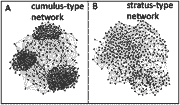
A LINK-Group paper has been accepted in the special issue of Current Protein and Peptide Science on disordered proteins (edited by Vladimir Uversky). The paper gives a comprehensive review on A.) the network descriptions of disordered proteins, B.) the consequences of network disorder on protein structure and dynamics; and C.) the functional consequences of protein disorder in cellular networks. Besides these the paper formulates two hypotheses: I.) on a novel classification of proteins to stratus- and cumulus-type classes describing the two ways of intramolecular signal transduction in these networks, and II.) suggesting that disorder plays a major role to reach hidden, rarely visited protein conformations important e.g. in cellular signaling. The paper can be downloaded from here.
The ModuLand method has been featured in Science Signaling
February 2011
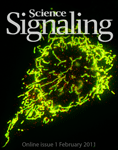
The February 2011 issue of Science Signaling highlighted the ModuLand method as one of the two network modeling tools of its ST Netwatch section. The method has been published earlier in PLoS ONE and we currently develop its user-friendly application as well as its sequel(s). The free computer program package with User Guide, algorithms and background can be downloaded from here.
At the closing conference of the PROTEOMAGE EU action, a LINK-poster received the conference award
June 2011
At the closing conference of the EU collaborative action PROTEOMAGE the poster of LINK-Group member Daniel Veres received the conference award.
The poster introduced a novel aging model comparing the currently used protein-protein interaction networks with those, where all protein pairs having no common cellular compartments are deleted. The novel integrative database on protein localization in S.cerevisiae, C.elegans, D.melanogaster and H. sapiens will be available here soon: http://www.linkgroup.hu/ComPPI.php.
Possibilities for PhD students and postdoctoral fellows at LINK-Group
June 2011

We are seeking motivated PhD students and postdoctoral research fellows to join our multi-disciplinary LINK-Group to study molecular networks in human and model organisms. The candidates must be able to independently carry out and design computational analyses. A candidate must have a strong background in computer science or mathematics, physics, chemistry, engineering, biology or medicine, and extensive training in computational modeling or fluent in using network analysis algorithms. The network analytical work might be extended with molecular and cell biological experiments on C. elegans. Candidates – especially at the postdoctoral level – must have solid publications to support their experiences and trainings. Foreign citizens are equally welcome and if accepted, will be awarded special fellowships. The working language in the lab is English. Applicants should send their CV and a motivation letter describing their research interests to Prof. Peter Csermely.
Peter Csermely became the network and systems biology editor of Cell Stress and Chaperones
May 2011
Peter Csermely became the Molecular Chaperones, Networks, and Systems Biology Section Editor of Cell stress and Chaperones (5-year IF: 3,2). The journal publishes articles related to cellular stress and molecular chaperones for 16 years.
The concept of signalogs has been published in PLoS ONE
April 2011
In connection with the SignaLink database, we published the concept of signaling orthologs, called signalogs in PLoS ONE. The paper (which also contains and experimental "proof-of-concept" on the predicting power of SignaLink) can be downloaded from here. SignaLink is a manually curated signalling network, which contains 1554 protein components and 1461 interactions of eight major signalling pathways from the nematode Caenorhabditis elegans, the fruit fly Drosophila melanogaster, and humans. Unlike worms and flies, all the eight human signalling pathways have the potential to cross-talk with all other pathways. The utilisation of these cross-talks is tissue-specific. We predicted 271 novel signalling proteins in the three species from which all of the six novel C. elegans Notch components were verified experimentally. 40 novel drug target candidates were identified. Posters on the project were awarded both at the March (Tamás Korcsmáros) and September (Illés Farkas) FEBS signaling conferences. Manuscript, supporting website: http://signalink.org.
More than 50,000 visitors at the LINK-Group homepage
February 2011

We are happy to note that our home-page had more than 50,000 visitors so far. Besides a detailed account on our research, and teaching materials, we recently added a lot more interesting links to the web-site. We continue this program and will expand the number of useful, network-related links further in the near future from here.
Peter Csermely became an Editor of PLoS ONE
November 2010
Peter Csermely became one of the Editors of PLoS ONE. The journal has reached an impact factor of 4.4 and became one of the largest scientific journals of the world. The LINK-Group had two key publications already in this journal, one about spatial games and another about the novel modularization concept of communitiy landscapes.
Our paper on an extended concept of induced-fit and conformational selection was published as the cover story of the October issue of the Trends in Biochemical Sciences
October 2010
In collaboration with Ruth Nussinov we described an extended conformational selection model, which embraces a repertoire of selection and adjustment processes. Induced fit can be viewed as a subset of this repertoire, whose contribution is affected by the bond-types stabilizing the interaction and the differences between the interacting partners. We argue that protein segments whose dynamics are distinct from the rest of the protein (‘discrete breathers’) can govern conformational transitions and allosteric propagation that accompany binding processes, and as such may be more sensitive to mutational events. Additionally, we highlight the dynamic complexity of binding scenarios as they relate to events such as aggregation and signalling, and the crowded cellular environment. The paper can be downloaded from here.
A novel paper of LINK-Group member Paolo Tieri on the complexity of the immune system
September 2010
LINK-Group member, Paolo Thieri has published a novel paper in Theoretical Biology and Medical Modelling entitled "Network, degeneracy and bow tie. Integrating paradigms and architectures to grasp the complexity of the immune system" which can be downloaded from here.
A new set of links has been added to our link-compendium
August 2010

Our suggestion of interesting links has been expanded by aging databases, links on complex system evolution, on network analysis, on network datasets, on network visualization and on several important mathematical tools. Our link-compendium is open for further amendments. If you want to suggest us your interesting, network-related link to include, please write us to [email protected] or send a note here.
The ModuLand overlapping modularization method family has been published in PLoS ONE
August 2010
Our paper introducing the novel concept of ModuLand has been accepted in PLoS ONE. Moduland is an integrative method family determining overlapping network modules as hills of an influence function-based, centrality-type community landscape, and including several widely used modularization methods as special cases. As various adaptations of the method family, we developed several algorithms, which provide an efficient analysis of weighted and directed networks, and (1) determine pervasively overlapping modules with high resolution; (2) uncover a detailed hierarchical network structure allowing an efficient, zoom-in analysis of large networks; (3) allow the determination of key network nodes and (4) help to predict network dynamics. Published version: http://www.plosone.org/article/info%3Adoi%2F10.1371%2Fjournal.pone.0012528; Supporting website with all downloadable algorithms: http://www.linkgroup.hu/modules.php
The updated, paperback version of the Weak Links book has been released
May 2009
The updated, paperback version of the successful 2006 book on Weak Links, i.e. low affinity, low intensity network contacts has been released in May 30th 2009 and can be ordered here. The book summarizes the stabilizing role of weak links in ALL complex systems, and offers novel chapters on network modules and on the creative elements of networks. The extensive coverage, the easy language and the 832 original references make this book a very good companion to anyone interested in networks between age 14 (or before) and 114 (or later).
The recent Link-Group paper showing that aging is a price of cooperation and complexity became a highlight of BioEssays
Apr 2009
The LINK-Group paper showing that aging can be perceived as a price of cooperation and the development of complexity of the self-organizing matter became a highlight of the June issue of BioEssays. The paper shows that the emergence of hierarchical complexity needs cooperation. This leads to the ageing (i.e. gradual deterioration) of the constituent networks. A stable environment develops cooperation leading to over-optimization, and forming an ‘always-old’ network, which accumulates damage, and dies in an apoptosis-like process. A rapidly changing environment develops competition forming a 'forever-young' network, which may suffer an occasional over-perturbation exhausting system-resources, and causing death in a necrosis-like process. The paper summarizes how various forms of cooperation and consequent ageing emerge as key elements in all major steps of evolution from the formation of protocells to the establishment of the globalized, modern human society.
The SignaLink database received the best poster award of the 2009 FEBS SysBio Conference
March 2009
Tamás Korcsmáros and co-authors presented the SignaLink signaling and protein-protein interaction database at the FEBS SysBio Conference (7-13 March 2009, Alpbach, Austria) and received the best poster award of the meeting. The database and results will be available soon here.
The ModuLand modularization program received a silver medal on a Hungarian National Competition
Feb 2009
Máté Szalay, Robin Palotai and István Kovács received a silver medal on the Hungarian National Science Competition of Undergraduate Students for the ModuLand method determining the overlapping modules of complex networks. A preliminary version of the method can be found here as a patent application. The full description of the method, results and all algorithms, programs and source codes will be available soon here.
The Journal of Biology LINK-Group paper on network-based drug-target prediction became a "highly accessed" paper
Aug 2008
The LINK-Group paper summarizing a number of recent drug-target network papers in leading journals and suggesting novel methods for the network-based prediction of novel drug targets as well as a better network-based assessment of drug candidate efficiency and side effects became a "Highly accessed" paper of the Journal of Biology, the premier biology journal of BioMed Central. An extended version of the paper containing a more detailed description of network-based methods to assess drug-effects on cellular robustness can be found here
Peter Csermely published a Nature Journal Club paper, and its background info in Trends in Biochem. Sci. on creative elements
July 2008
LINK-Group member, Péter Csermely published a Nature Journal Club paper on the active centers of enzymes and proposed that the protein structure network elements forming these active centers, called creative elements, can be found in all evolved networks and play a key role in the development, inheritance and regulation of evolvability. The detailed description of creative elements appeared as a cover story in Trends in Biochem. Sci. and can be found here.Download it! 
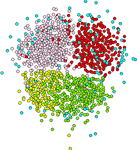
ModuLand:
Analysis of complex, real-world networksup to several million nodes, identification of key nodes and prediction of behavior. More...

Questions | Address | Design and maintenance | Visitors since 7th July 2004:

